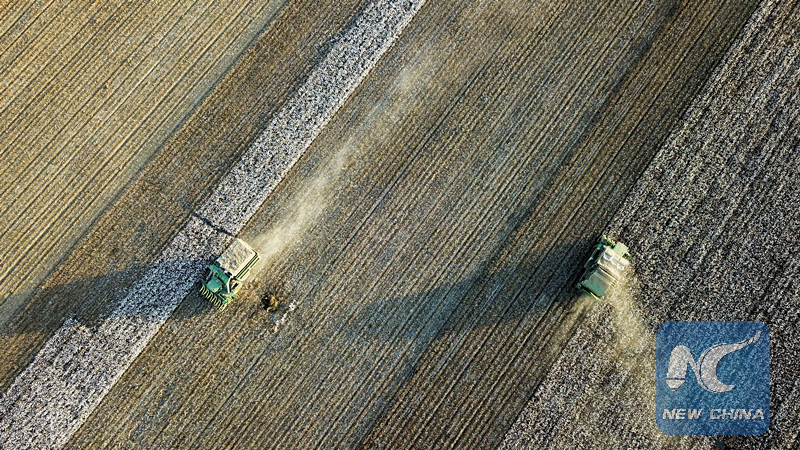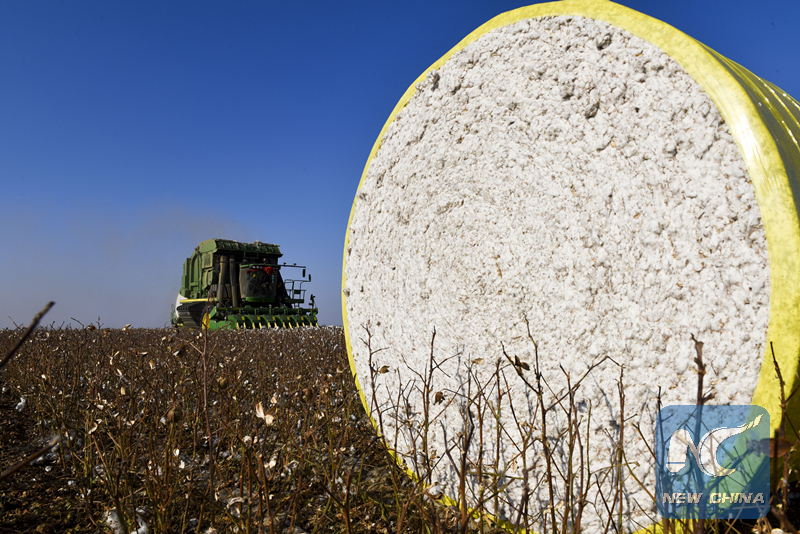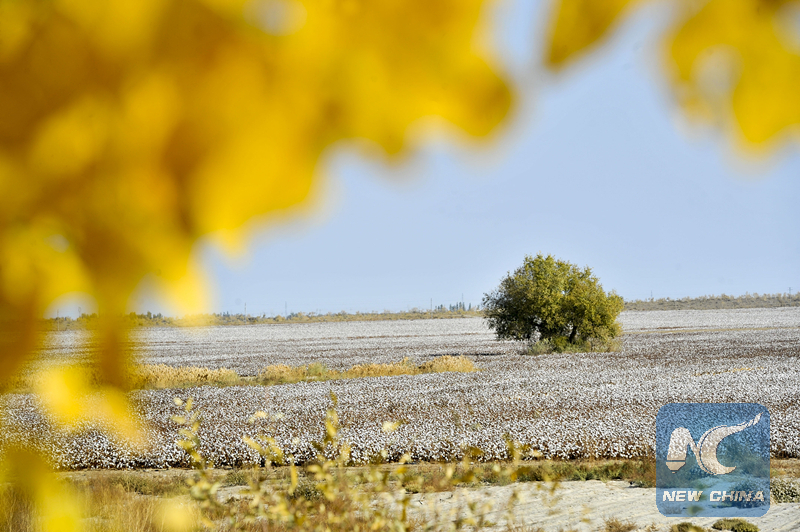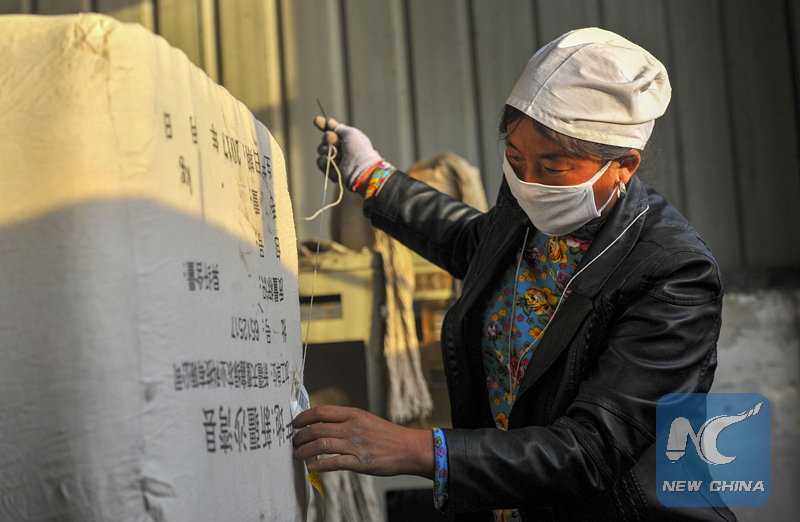
Cotton bales are hauled by a tractor. (Xinhua/Hu Huhu)
Machines are replacing hundreds of thousands of migrant workers picking cotton in northwest China's Xinjiang Uygur Autonomous Region, the biggest cotton production base in the country.
At this time of year Xinjiang's cotton growers would usually have started hiring workers to pick their cotton. However, 116,000 hectares of cotton fields in Shawan County have already been harvested by cotton-picking machines.

Workers pick cotton with two harvesters. (Xinhua/Hu Huhu)
"In the past, the cotton picking season lasted at least 45 days from October to November. But now, the machines can harvest a 15-hectare cotton field in one day," said Lin Hongru, head in Caohu Village.
A cotton-picking machine can do the work of 2,000 workers each day, he said.
"The cotton picking season was the busiest time of the year. Cotton growers in my village hired migrant workers from Gansu, Sichuan and Henan provinces to help. People worked in the fields from dawn to dusk," said Lin, who has been growing cotton since 1998.
He remembered in the past so many workers traveled from across the country to Xinjiang when autumn came that Xinjiang's railway department had to put extra trains in service from August to December to deal with the traffic rush.

Farmers check their cotton in the field. (Xinhua/Hu Huhu)
Now, roaring machines move through in the fields, removing the cotton from the bolls and collecting it in a large container. Cotton picking season has become much easier for growers.

A harvester works in the field. (Xinhua/Hu Huhu)
Xinjiang produced 3.594 million tonnes of cotton in 2016, accounting for 67.3 percent of China's total, up from 62.5 percent in 2015, according to the National Bureau of Statistics.
Although there was a decrease in cotton growing area last year, cotton yield per hectare increased by 151.5 kilograms in 2016, thanks to the increase in machinery and irrigation.
China accounts for about 30 percent of the world's cotton output, with only 15 percent of the world's cotton-growing land.

Cotton field in Shawan County. (Xinhua/Hu Huhu)
In Shihezi County, cotton farmer Bao Yucheng said he used to pay 160,000 yuan (24,000 U.S. dollars) to hire more than 20 cotton pickers to harvest his 13,333 hectares of fields. This year he paid 50,000-60,000 yuan to hire a cotton picking machine.

Cotton field in dusk. (Xinhua/Hu Huhu)
Agricultural technicians took advantage of the harvesting season to demonstrate a new generation cotton-picking machine, which can pack the cotton into 2-tonne bales while harvesting.
Gao Yongjian, an agri-technician, told farmers that the machine is more efficient than the older models.
He said large-scale farming is increasing in Xinjiang, as farmers became more interested in joining rural cooperatives to share machinery.

A worker packs cotton in a factory. (Xinhua/Hu Huhu)
China's cotton harvesters are also introduced to countries participating in the Belt and Road Initiative, just as cotton was imported to China in ancient times via the trade route Silk Road.
Although most local farmers still rely on manual picking in Tajikistan, some Xinjiang farmers are using harvesters in about 6,600 square meters of cotton fields in Danghara region, south Tajikistan, in an effort to promote modern agriculture in the country.
Source: xinhuanet.com